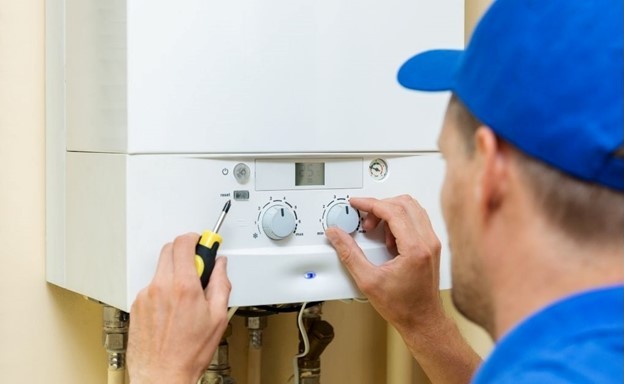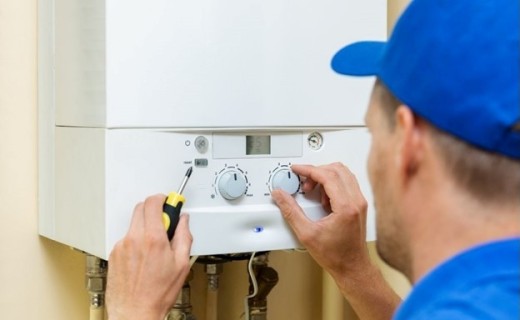6 ways to increase boiler efficiency in facility guide, Home heating technology, Modern property MEP advice
6 Ways to Increase Boiler Efficiency in Your Facility
17 Nov 2021
One of the most remarkable ways to lower your bills is to find out how recently boiler maintenance was performed at your end. You can also lower your bills by checking the efficiency of the boiler. But, before we get into the specifics of increasing efficiency, you must know what it is in the first place. The majority of heat lost by your boiler stays in the boiler water or its stack. Your goal is to create those conditions that can generate flue gas in minuscule amounts at the lowest temperature.
When you can achieve that, you get increased boiler efficiency. The boiler draws cool air, heats that, and sends it out. A slower temperature of the gas stack is suitable because a higher temperature causes more energy to leave with the flue gas.
But, a boiler system acquires cold water, heats it, releases the steam, and uses the heat from the steam. Anywhere we lose hot water, condensate, steam, or heat, we lose valuable BTUs. Remember that you own or rent a boiler; you must save money. Here are some tips to make the boiler efficiency.
1. Insulate valves
Many plants get rid of the insulation on boiler valves in their maintenance rooms and never put it back because it is no less than a hassle. However, when these large valves get exposed to air, lots of heat is lost. The boiler room can also become unbearably hot. You can check this website to insulate these valves with a removable blanket to enhance boiler room comfort. The blankets reduce burn risks while still permitting easy maintenance access.
2. Reduce the stack temperature
Lowering the stack temperatures is simple, and there is no rocket science involved in it. When you lower stack temperature, the operating pressure reduces for steam boilers, and the hydronic boilers’ operating temperature also reduces when idling at mild days/night.
3. Tune the burner frequently.
When your boiler does not get the appropriate amount of air, the boiler becomes inefficient. For proper fuel combustion within the boiler, you need oxygen in specific amounts. If there is too little air, the fuel’s carbon gets oxidized, and carbon monoxide formation occurs.
Hence, less heat is released because of incomplete fuel combustion, which further lowers fuel use efficiency. Low air results in carbon monoxide, smoke, soot, and these three together are hazardous.
Thus, you can insert the probe into a stack to tune the burner for optimum efficiency. In some facilities, the air temperature drawn into the burner differs with seasons. Therefore, burner tuning must be made a frequent affair in such facilities to maximize savings.
4. Install a VFD
Not many pumps or burner fans exist without VFDs today. However, if you do not have a system that uses them, or have not come across the term variable frequency drive, take note. If your system has a valve or damper-controlled circulation pump, remember that electricity is getting wasted at partial loads. In that case, you must install a VFD to let the system control flow with pump speed or fan instead, and that is where magic would happen.
5. Control the blowdown rate
Blowdown helps to remove water hardness and other impurities from the boiler. It helps to clean the boiler surfaces. However, blowdown also helps to remove heat from the system. Coldwater enters the system, gets heated to boiler temperature, and leaves the blowdown.
Some boiler systems cause continuous blowdown and help in serious savings. With an automatic blowdown valve, you can manage the dissolved solids that reduce damage risks to the boiler as well.
6. A fireside cleanse is necessary.
Over time, soot builds up on the boiler tubes’ fireside. This soot layer behaves as an insulator and brings down the rate of heat transfer while increasing fuel use. If you inspect and clean the boiler tubes as a part of your regular maintenance session, the soot quantity will minimize, and the overall boiler efficiency will enhance.
6 ways to increase boiler efficiency in facility – Conclusion
If you want to save on electricity and fuel, reduce the steam usage on your boiler. You can insulate pipes and steam-heated tanks to bring down the fuel and steam usage. As a result, boiler efficiency increases, and you can prolong the boiler’s life besides controlling the energy bills.
Comments on this 6 ways to increase boiler efficiency in facility article are welcome.
Edinburgh Architecture
Vision for National Centre for Music at Royal High School
New National Centre For Music Edinburgh
Rowanbank Gardens
Rowanbank Gardens Edinburgh Housing
Powderhall Stables Building
Powderhall Stables Building
Comments / photos for the 6 ways to increase boiler efficiency in facility page welcome





